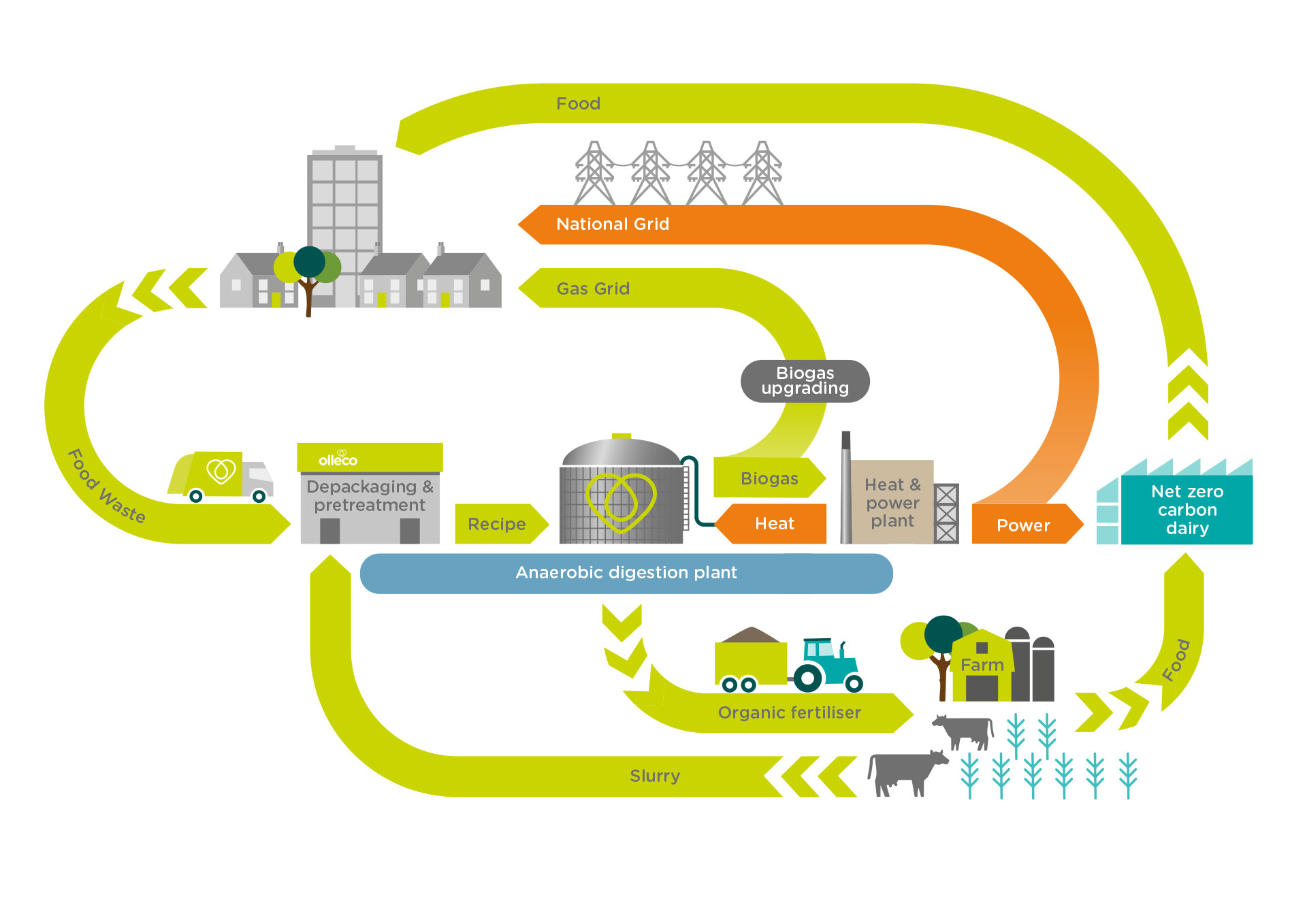
What happens to food waste?
The food waste that is collected separately for recycling across Buckinghamshire is turned into energy to power our homes and also a high quality fertiliser for use on agricultural land.
The recycling process for food is called anaerobic digestion, read the process below, or watch this video.
-
Food waste is delivered to the anaerobic digestion facility, where it is tipped into a sealed reception area.
-
The food waste is then ground up and passed into the heated digester tanks.
-
Methane produced in the tanks is used to generate electricity, which is fed into the National Grid to power homes and businesses.
-
The nitrogen-rich liquid left at the end of the process is then pasteurised and used as farm fertiliser
Did you know the facility outside Aston Clinton produces enough electricity by recycling food waste to power 12,000 homes.
Aylesbury is where all of Buckinghamshire's food waste is sent for recycling. There are Anaerobic Digesters at Westcott and Aston Clinton in Buckinghamshire, find out more.
16,000 tonnes of food is recycled from Buckinghamshire homes each year, but there is more than 25,000 tonnes still put in rubbish bins.
